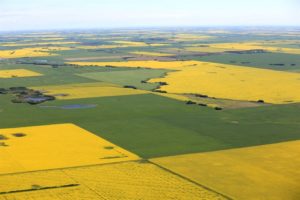 Crop Rotation
Crop Rotation
Urban gardens, horticulture operations, grain farms should all be practicing crop rotation.
Why rotate crops?
Every crop is prone to being affected by specific diseases, weeds and insects. Rotating crops reduces these risks. Additionally, every crop requires different nutrients and rotating crops with different types of root structures allows crops to use moisture and nutrients from different soil depths.
Improving biodiversity
Biodiversity refers to the number of species and ecosystems in a region and the health of an ecosystem. Biodiversity can reduce the impact harmful insects have on crops, reduce the amount of fertilizer and help manage weed infestations.
See Our PDF to Learn More: DownloadPrint
Journey 2050 Lesson: 5
This resource is a great addition to Lesson 5 – Land-Use
SnapAg:
What are GMOs and are they okay to eat? What does organic farming look like? How are animals like chickens or cattle raised?
snapAG is a series of resources that invite students to explore the hot topics affecting the agriculture industry today. Topics range from organics, biotechnology, GMOs, livestock, and more.
Explore what’s trending in agriculture in Canada by browsing the topics here.
Sources available at: https://aitc-canada.ca/en-ca/learn-about-agriculture
snapAg is brought to you by Agriculture in the Classroom Canada and partners.



